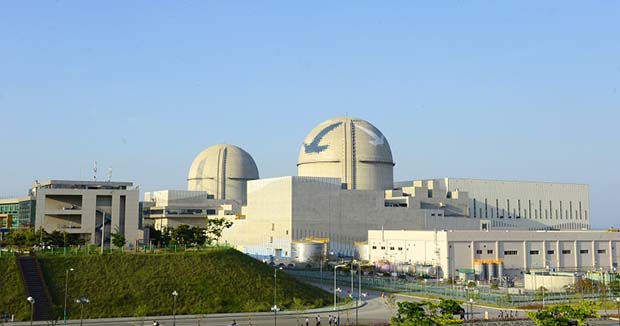Citizens’ Jury Recommends Resuming Nuclear Construction in South Korea
Construction of two nuclear plants in South Korea, halted this July by President Moon Jae-in’s announced policy to phase out nuclear power, will continue after a citizens’ jury voted to resume the projects.
Korea Hydro & Nuclear Power (KHNP) was building Shin Kori 5 and 6, two AP1400 units, but the company decided to suspend construction for three months following President Moon’s administrative order to halt their construction in June. The projects were about 30% complete, and $1.4 billion had reportedly already been spent on their construction.
An independent panel of 471 randomly selected citizens—a so-called “citizens’ jury”—convened in July to determine the future of the two reactor projects. This week, after months of deliberations and expert presentations from an array of interest groups, 59.5% of the panelists voted to resume construction of the reactors. The Korea Herald reported that 40.5% wanted to see the projects abandoned.
The newspaper reported, however, that a majority of the jury, which was surveyed four times, backed a reduction in South Korea’s reliance on nuclear power. In the fourth survey, 53.2% of the jurors backed a scale-down, 9.7% supported an increase of nuclear power, and 35.5% wanted to stick with the existing reliance.
Resumption of the Shin Kori projects will now be endorsed at the next Cabinet meeting on October 24.
How the nation will proceed with incorporating nuclear power in its future energy mix is uncertain, however. President Moon, who took office in May 2017, campaigned heavily on ending the country’s reliance on coal and nuclear. South Korea relies heavily on imported resources to meet about 95% of its energy needs, and the country’s 24 reactors, which generate about 30% of its power, are pivotal to its energy security (for more, see “South Korea Walks an Energy Tightrope”).
State-owned KHNP on October 20 said in a statement that it will now take the necessary steps to resume construction of the Shin Kori units if the recommendation to resume them is accepted on Tuesday.
“Once we receive the official documents from the government, we will notify contractors of the decision and push for the resumption of construction based on changed contract terms, which were delayed due to the temporary suspension,” the KHNP said. The company added that financial damages inflicted on local contractors as a result of the suspension hovers at 100 billion won ($88.2 million).
The two units use South Korea’s indigenously designed APR1400 advanced reactor design. The world’s first unit (Shin Kori 3) to use the design was connected to the grid in January 2016, and four others are under construction in the United Arab Emirates.

According to KHNP, the APR1400 evolved from the “well-proven” OPR1000 Korean Standard Nuclear Power Plant design, taking just 10 years and 234.6 billion won ($193 million) to develop.
—Sonal Patel is a POWER associate editor (@sonalcpatel, @POWERmagazine)